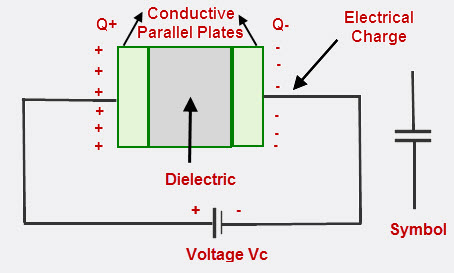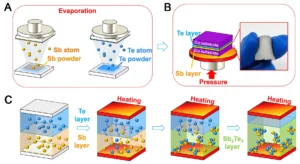Capacitors are fundamental components in electrical circuits, playing a crucial role in storing and releasing electrical energy. Their significance spans various fields, from electronic devices to power systems. In physics, capacitors are studied within the realm of electromagnetism, revealing the principles governing their behavior and applications. This article aims to provide a detailed exploration of capacitors, delving into their construction, working principles, types, and applications.

Construction of Capacitors:
Capacitors consist of two conductive plates separated by a dielectric material. The conductive plates are typically made of materials like aluminum or tantalum, while the dielectric can be air, ceramic, paper, or other insulating materials. The dielectric’s nature influences the capacitor’s characteristics, such as capacitance and voltage rating. The construction forms a simple yet essential device capable of storing electric charge.
Working Principles:
The fundamental working principle of a capacitor lies in the storage of electric charge. When a voltage is applied across the capacitor terminals, an electric field is established between the plates. Electrons accumulate on one plate, creating a negative charge, while the other plate becomes positively charged. The dielectric material between the plates prevents the flow of electrons, maintaining the charge separation. This stored electrical energy can be released when the capacitor discharges, providing a burst of energy to the circuit.
Capacitance:
Capacitance, denoted by the symbol C, is the measure of a capacitor’s ability to store charge. It depends on the surface area of the plates, the distance between them, and the dielectric constant of the material between the plates. The formula for capacitance is given by C = ε₀A/d, where ε₀ is the vacuum permittivity, A is the area of one plate, and d is the distance between the plates.
Types of Capacitors:
There are various types of capacitors, each designed for specific applications. Some common types include:
1. Electrolytic Capacitors: These use an electrolyte as the dielectric and are polarised, suitable for high capacitance applications.
2. Ceramic Capacitors: Utilising a ceramic material as the dielectric, these capacitors are compact and find applications in high-frequency circuits.
3. Tantalum Capacitors: Similar to electrolytic capacitors but using tantalum metal, they offer high capacitance and reliability.
4. Variable Capacitors: These capacitors allow manual adjustment of capacitance, commonly used in tuning circuits.
Applications of Capacitors:
Capacitors serve diverse purposes in electronic circuits, power systems, and communication devices. Some applications include:
1. Energy Storage: Capacitors store energy for quick release, making them vital in applications requiring sudden bursts of power.
2. Filtering: Capacitors filter out unwanted frequencies in circuits, enhancing signal quality.
3. Timing Circuits: Capacitors in combination with resistors create time delays in circuits, crucial for various applications.
4. Power Factor Correction: Capacitors improve the power factor in electrical systems, optimising power transmission efficiency.
Conclusion:
Capacitors are indispensable components in the realm of physics and electrical engineering, showcasing their versatility in various applications. Understanding their construction, working principles, and types allows scientists and engineers to harness their potential for advancing technology and developing innovative solutions in the ever-evolving world of electronics.




